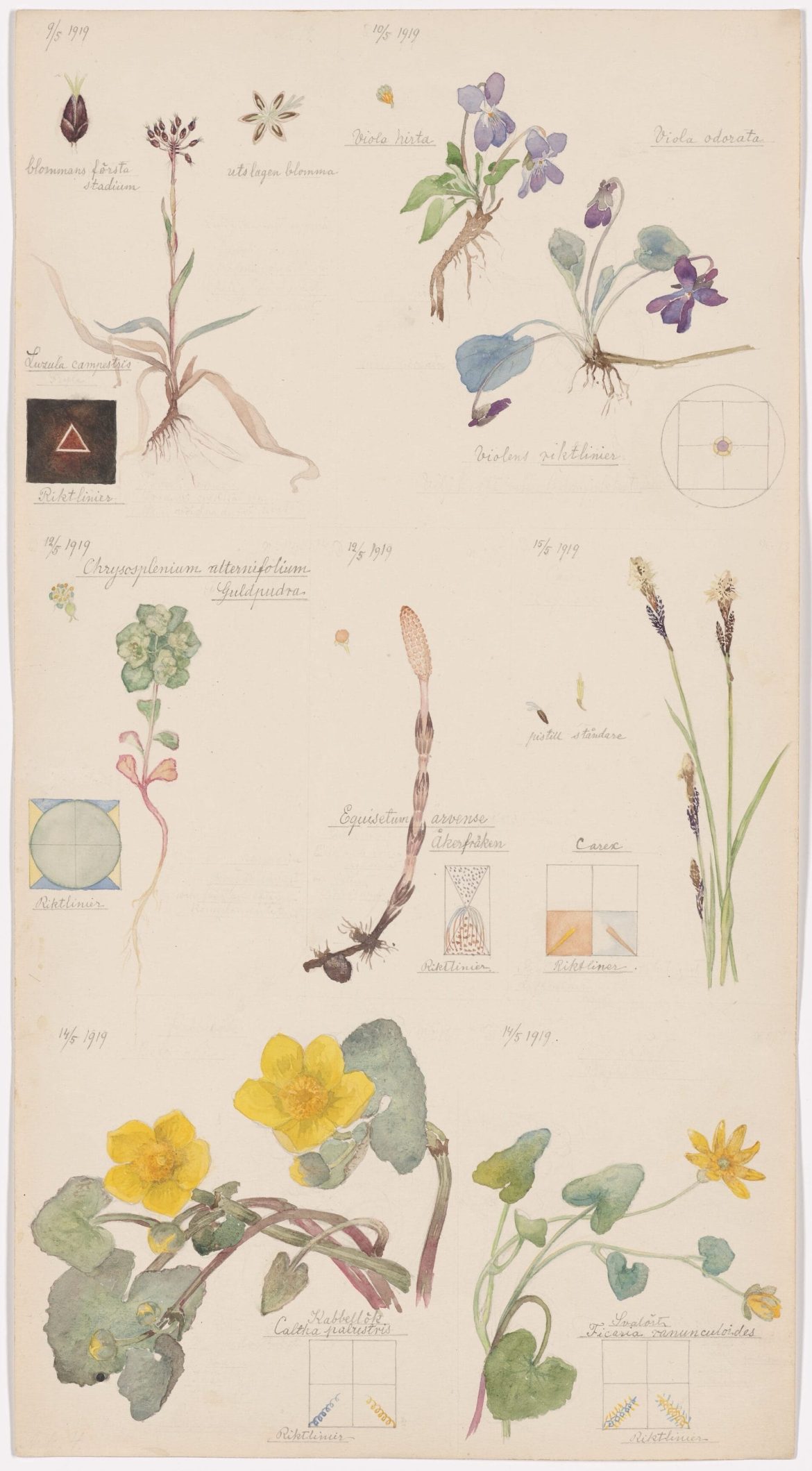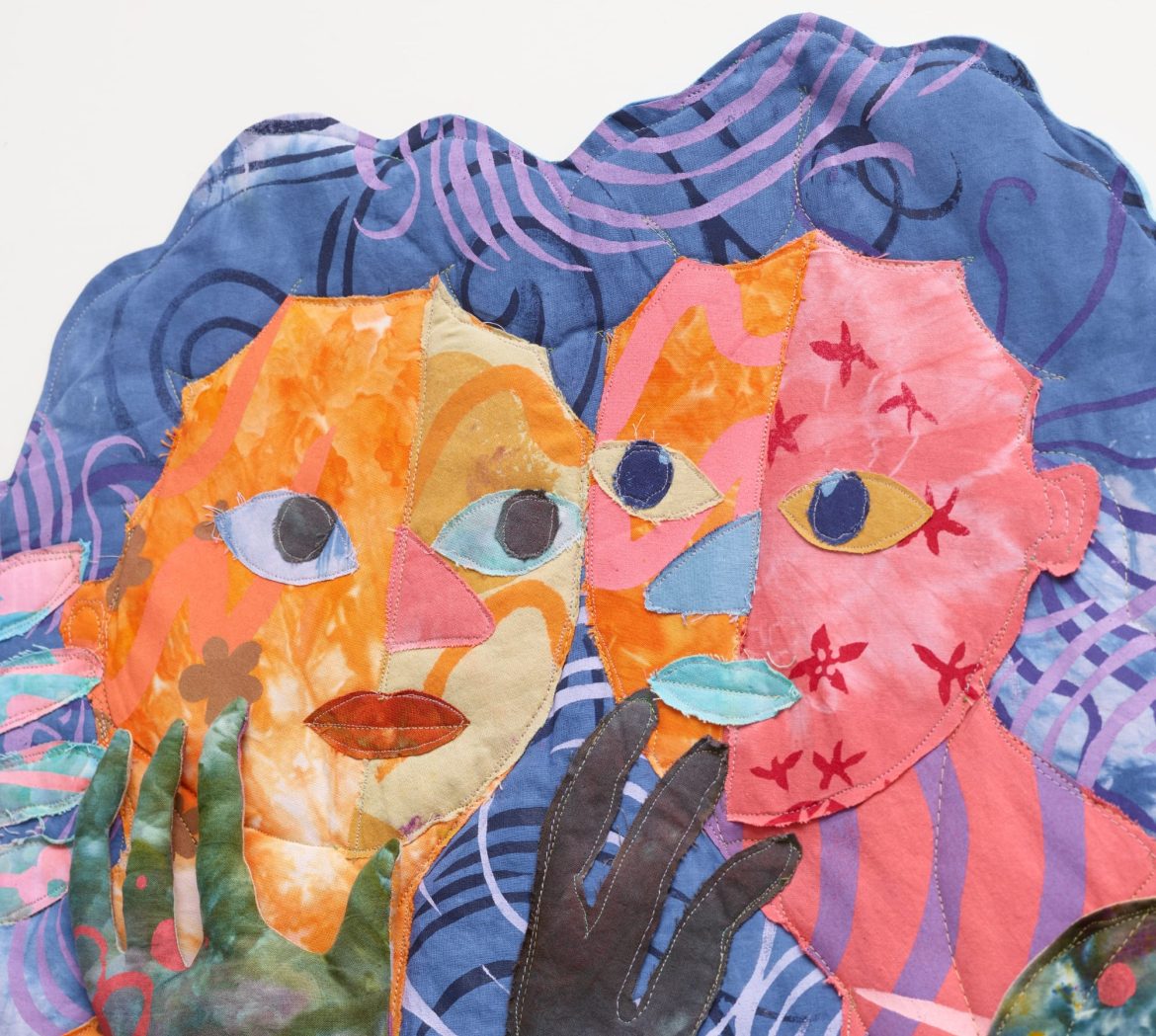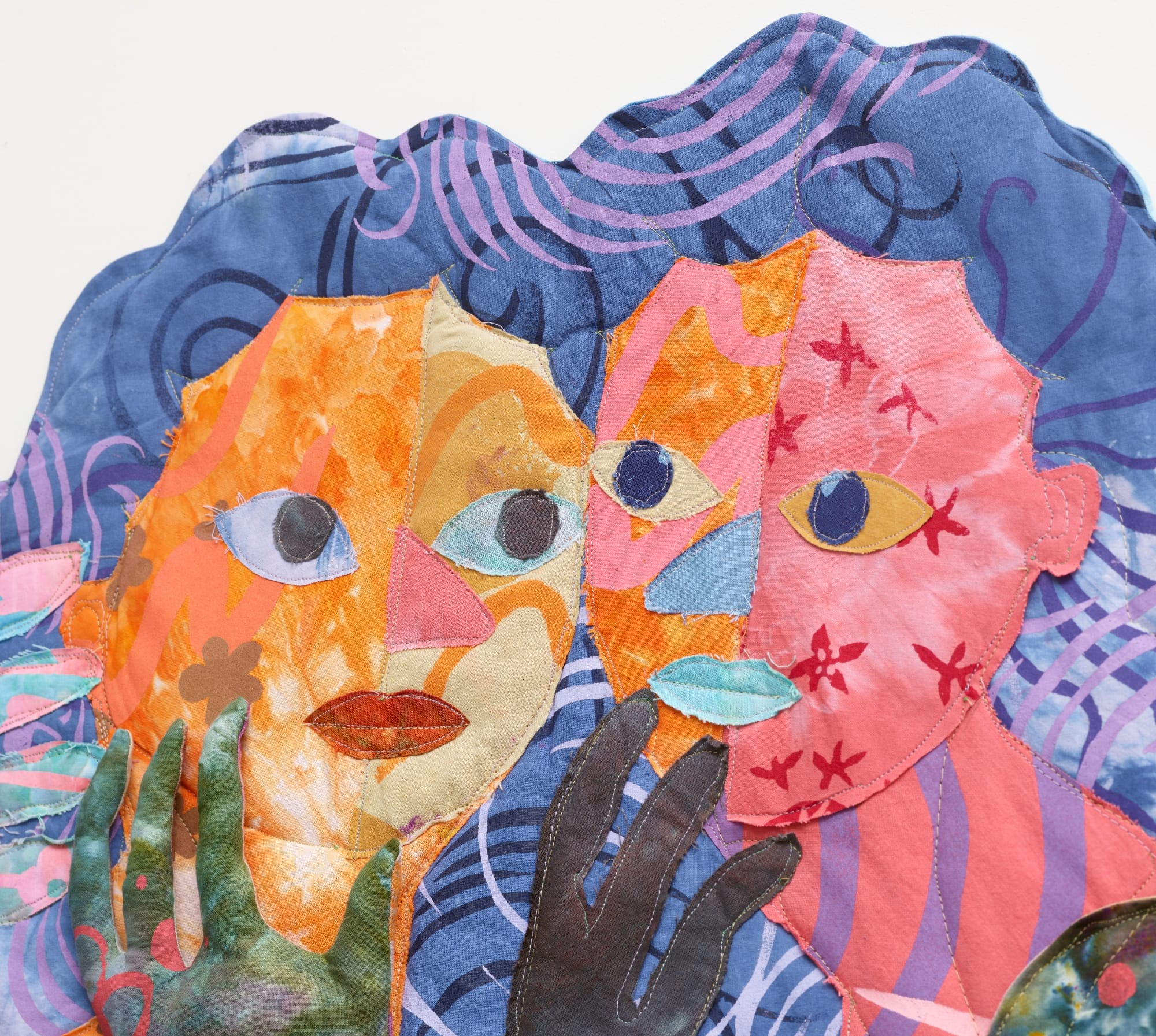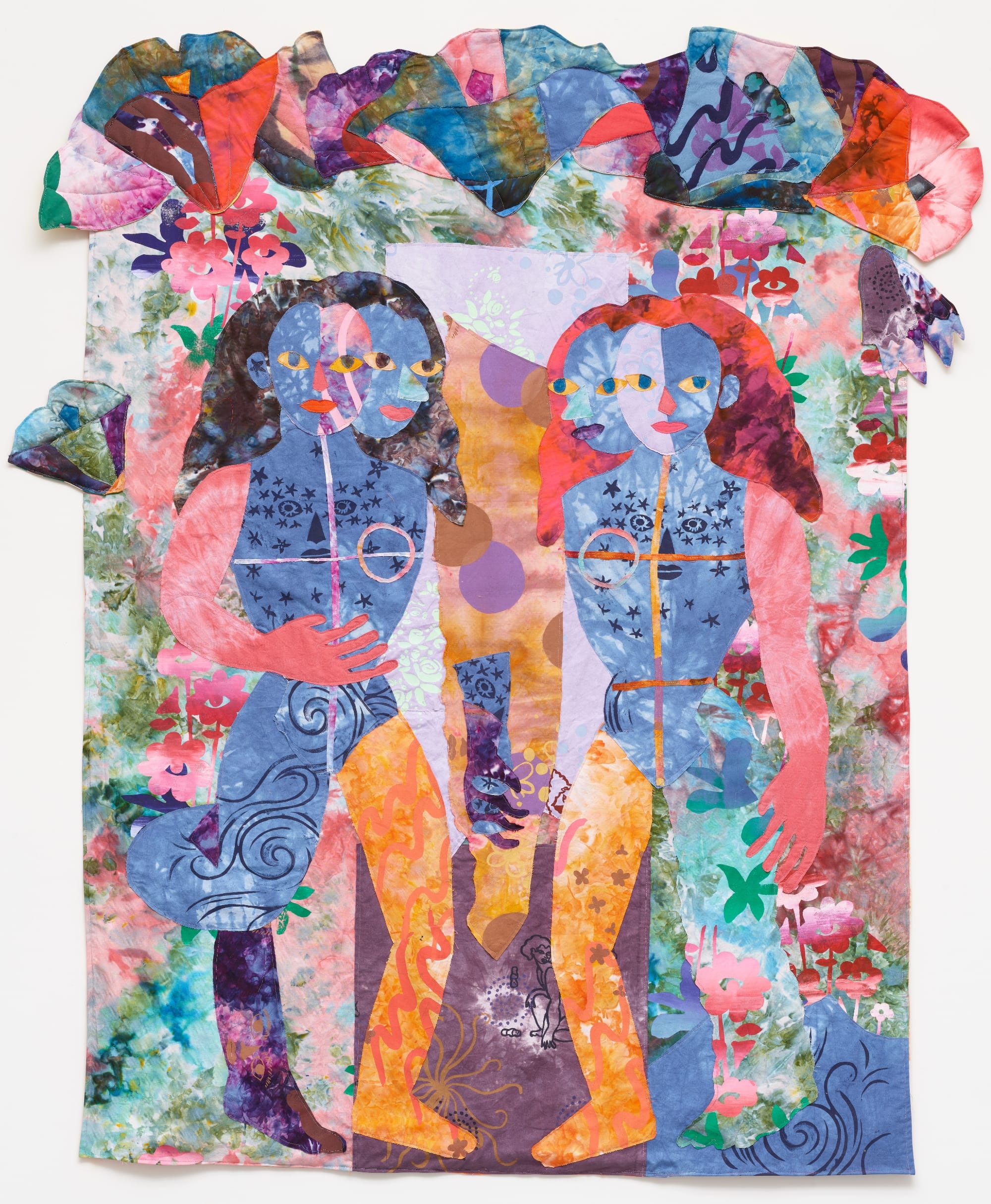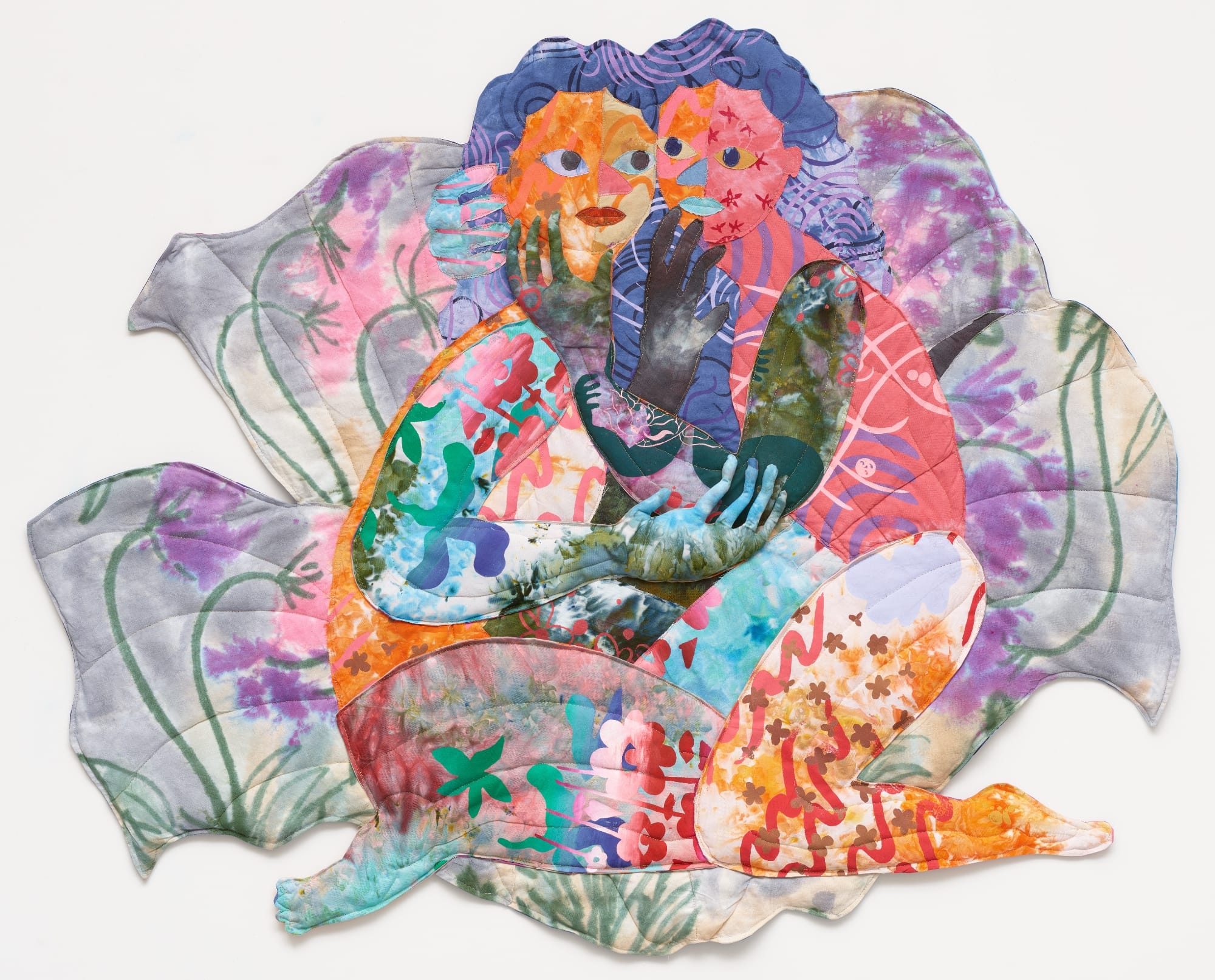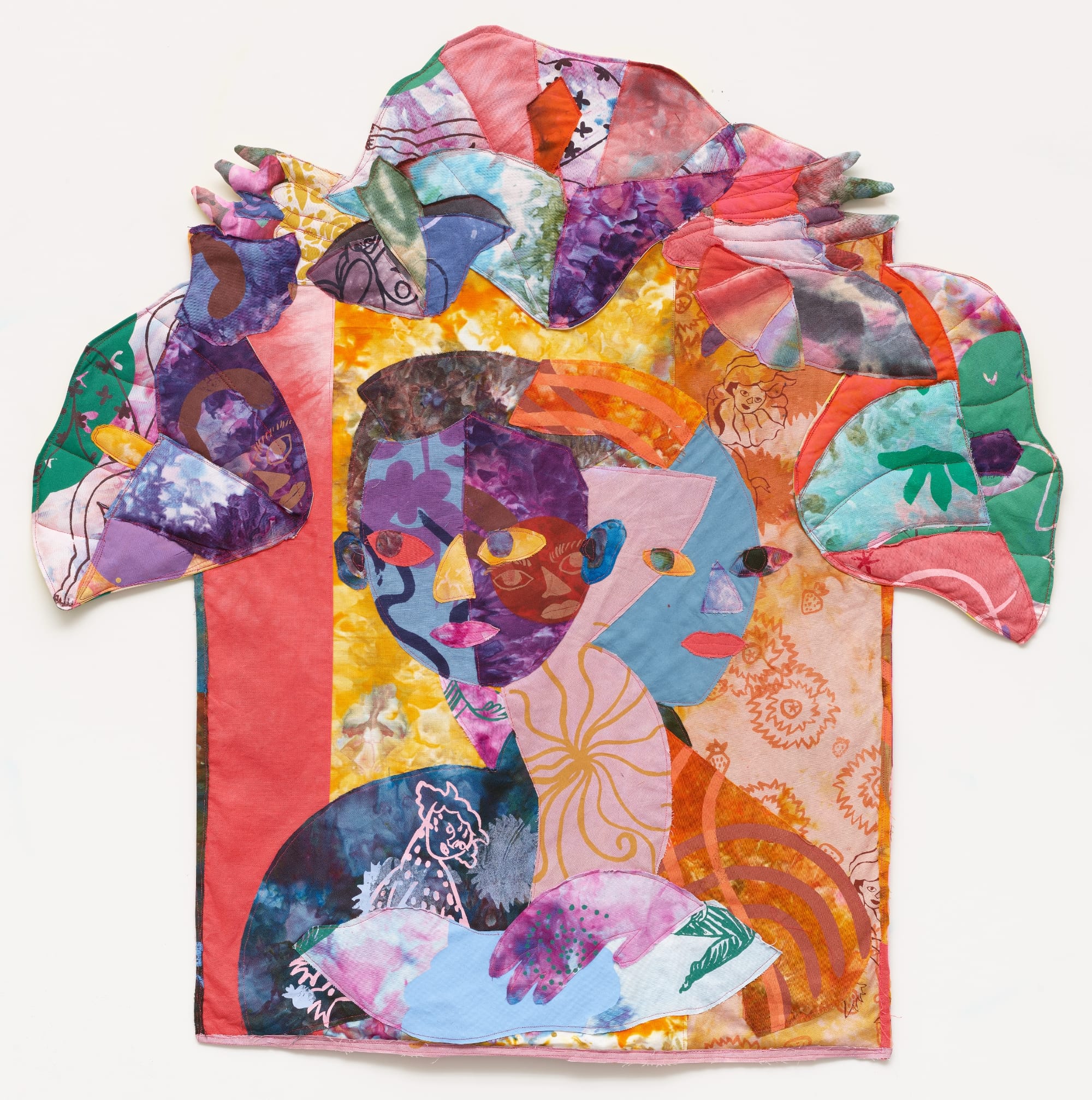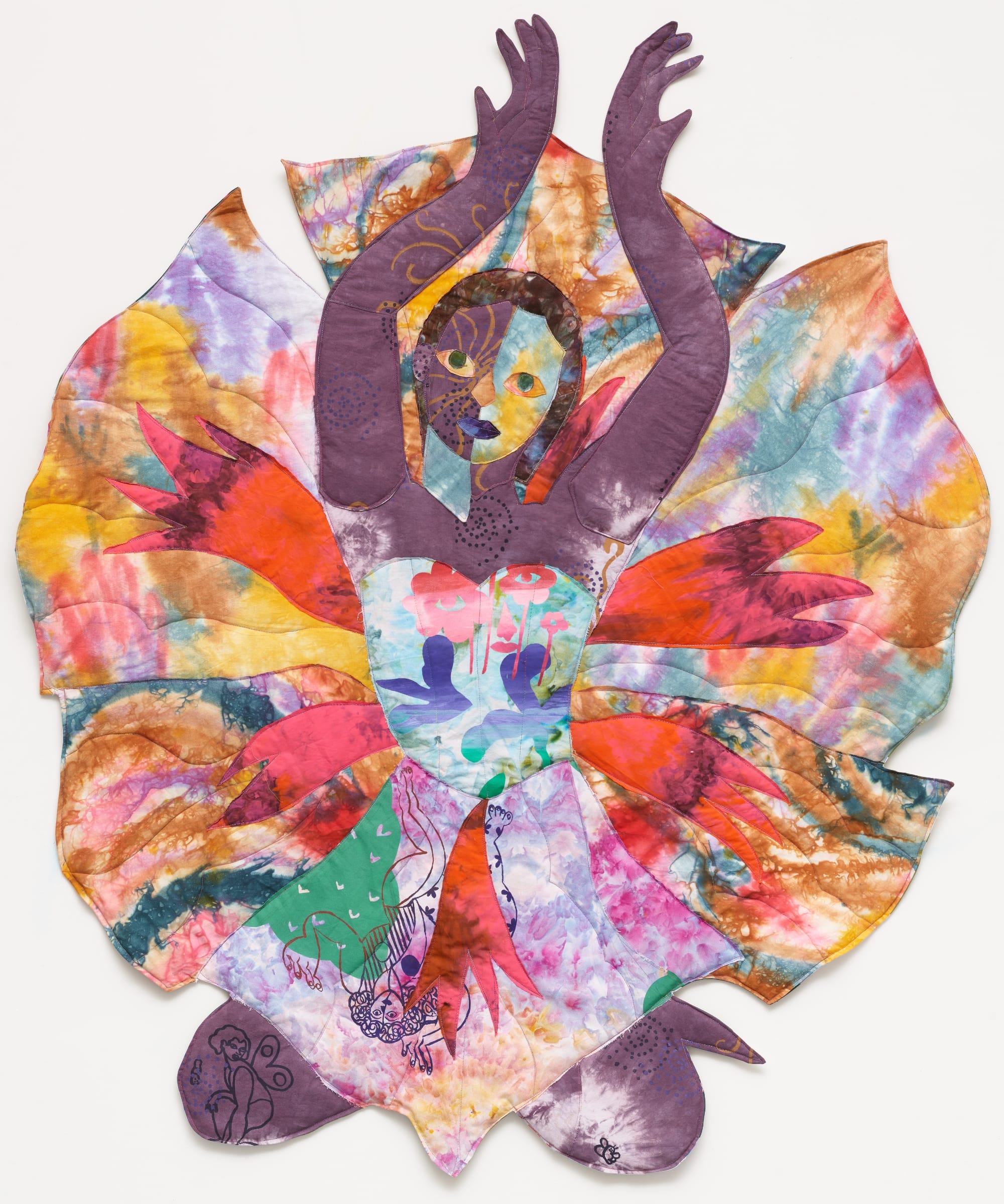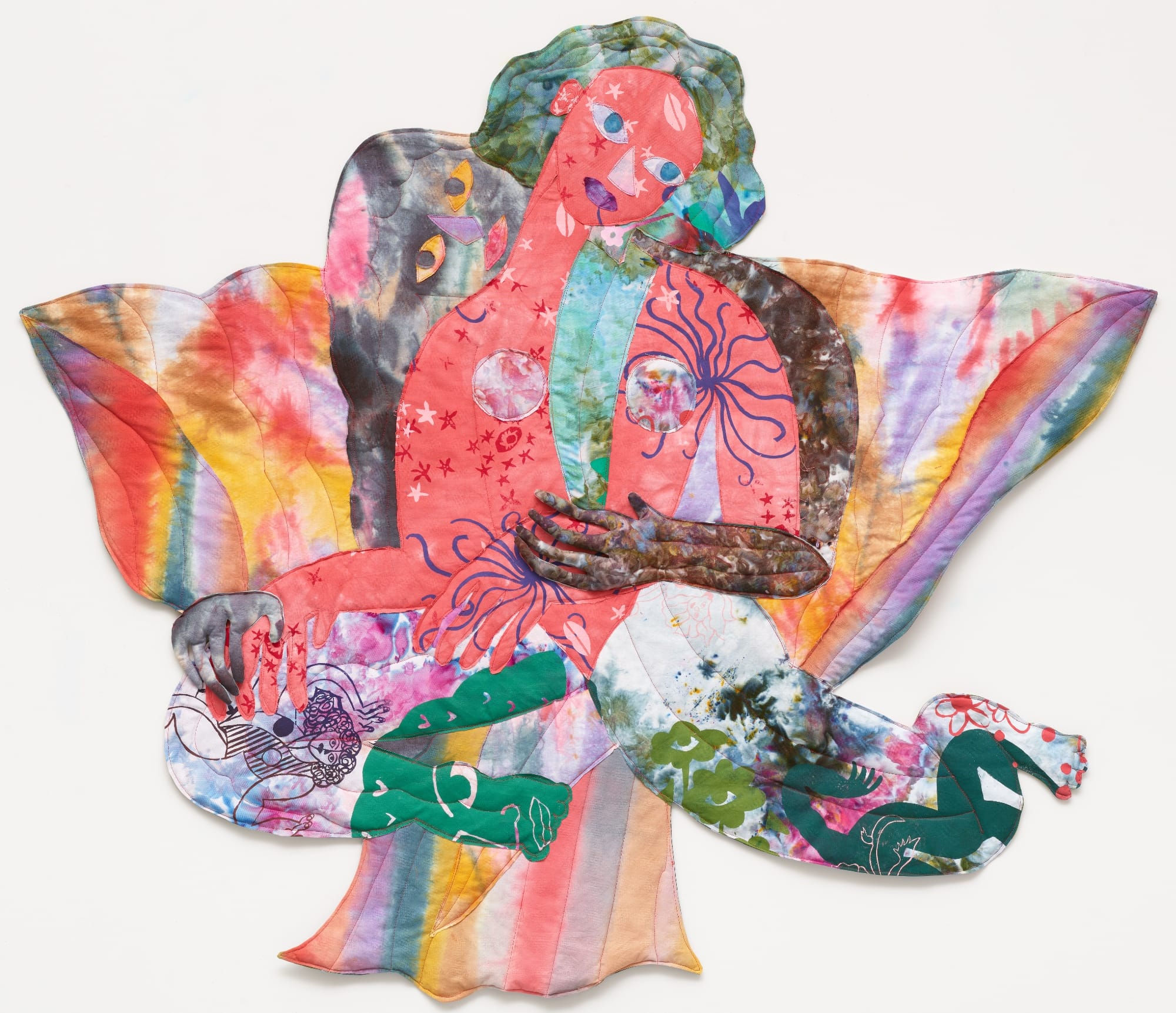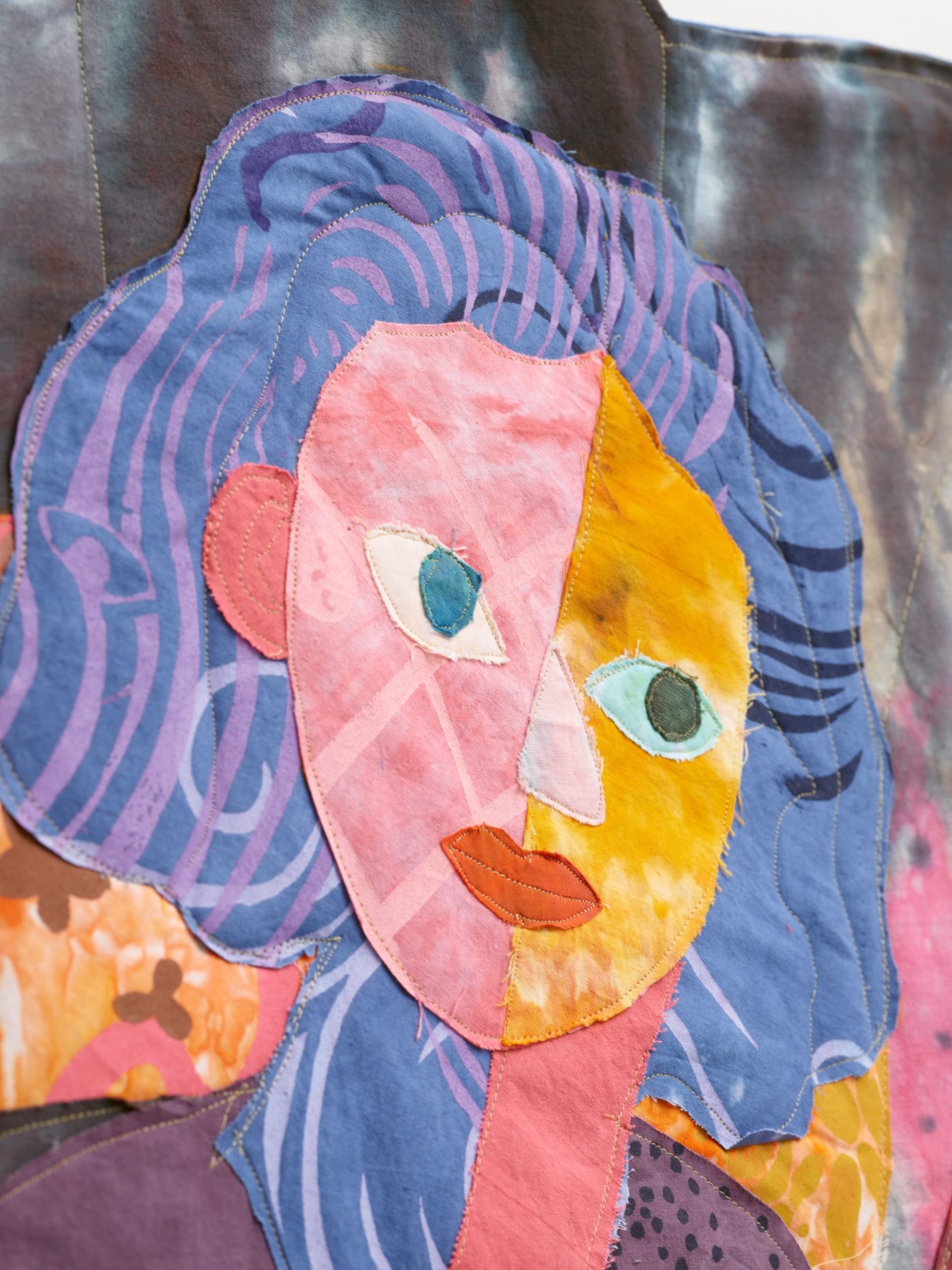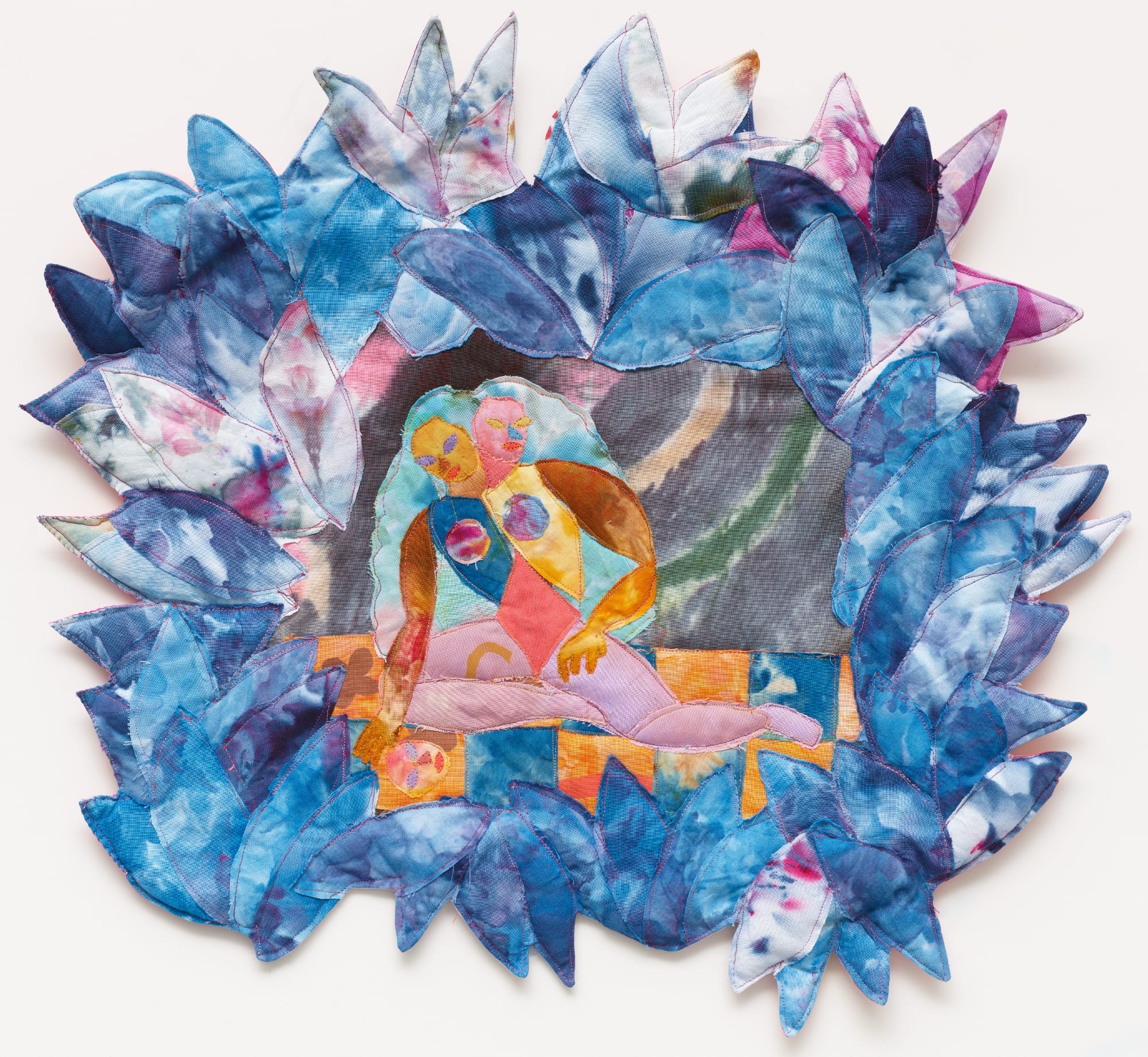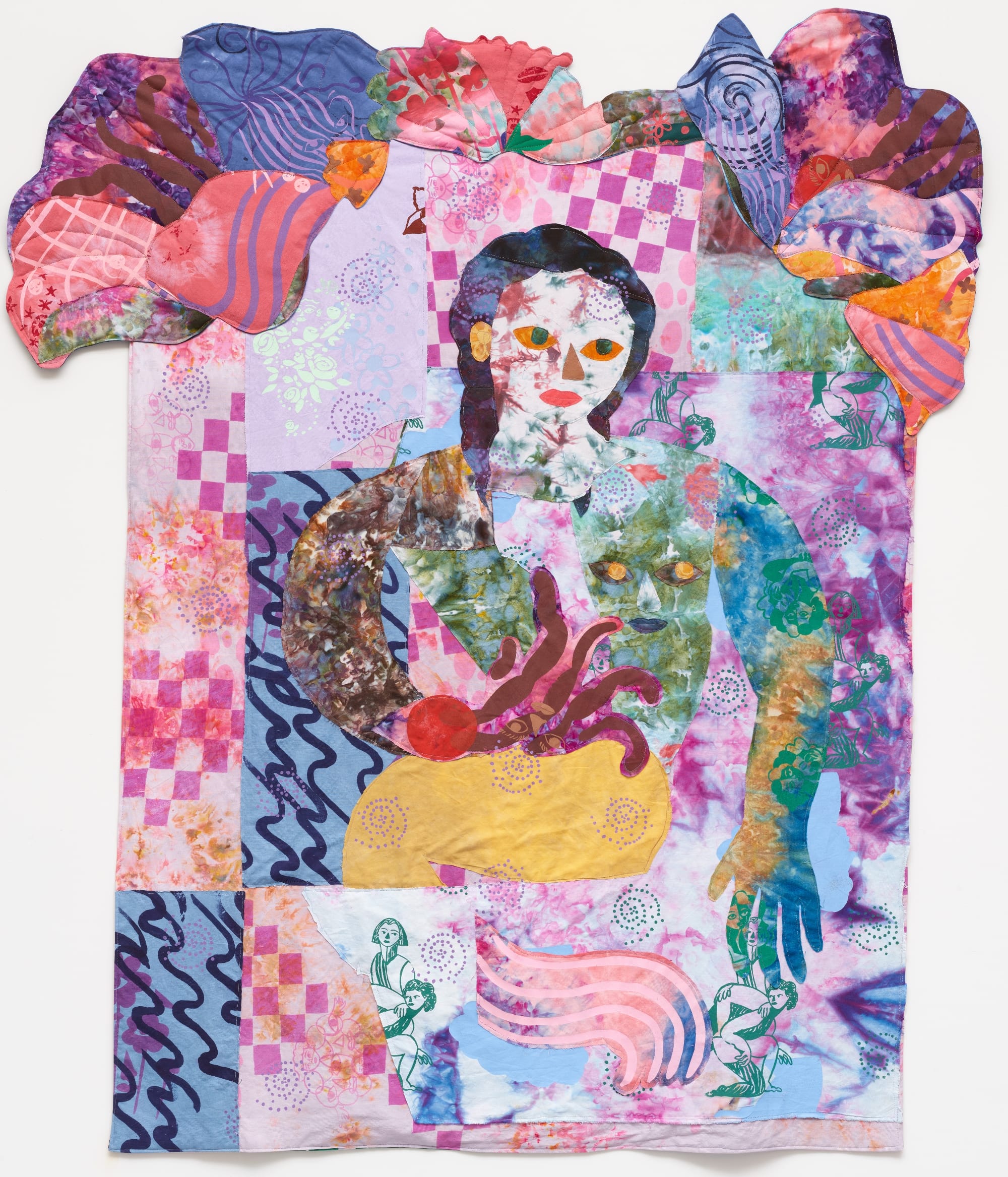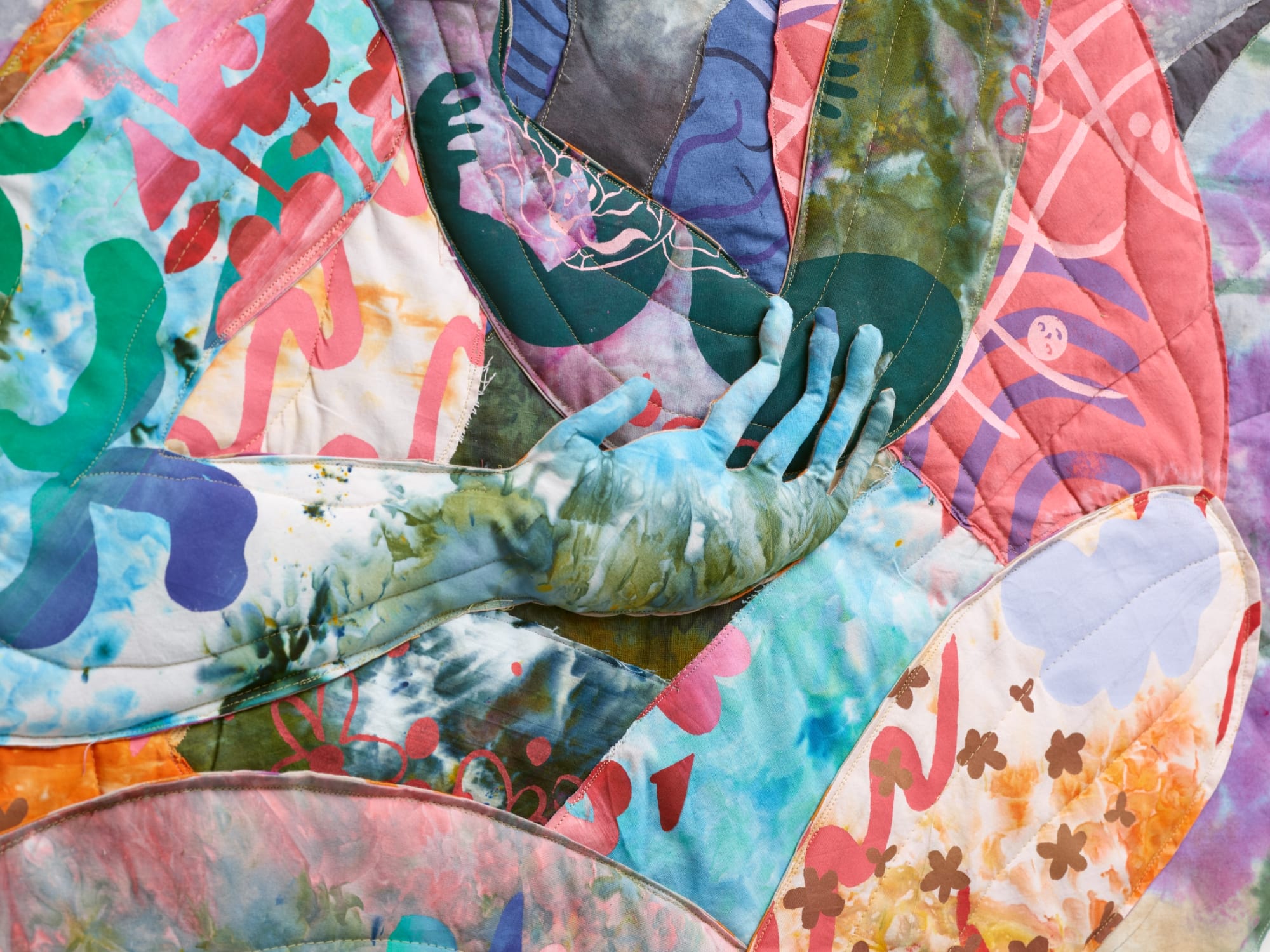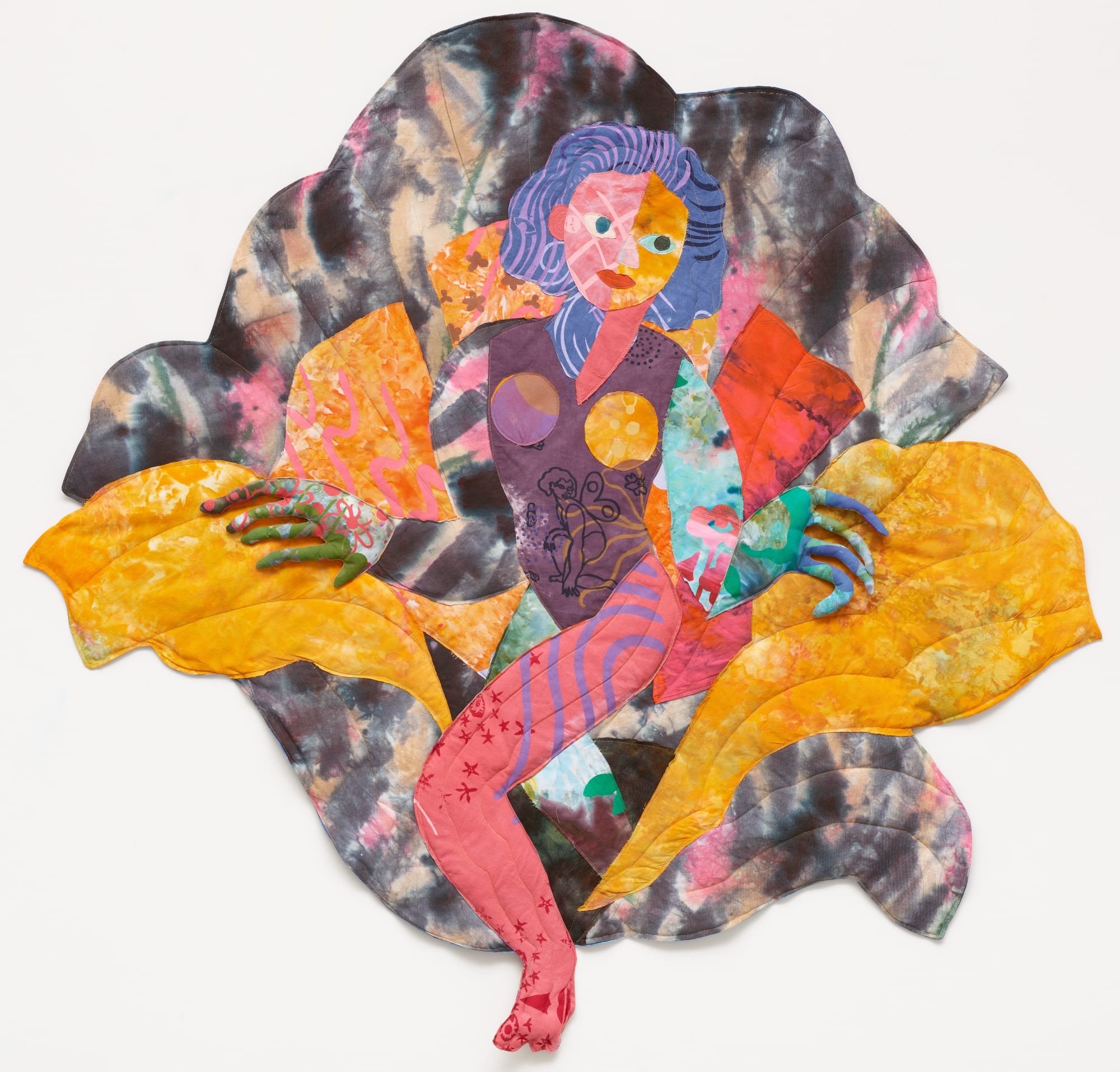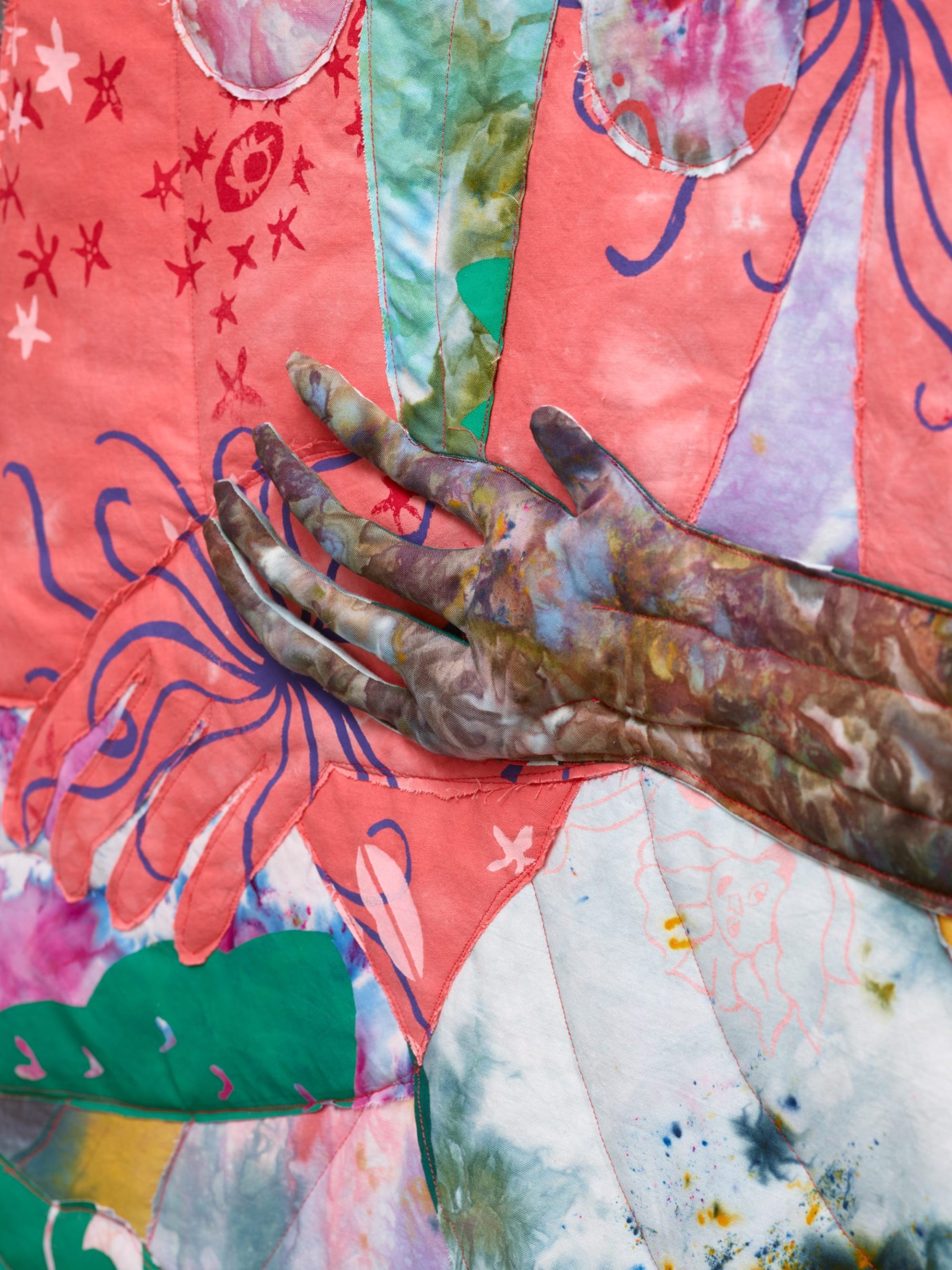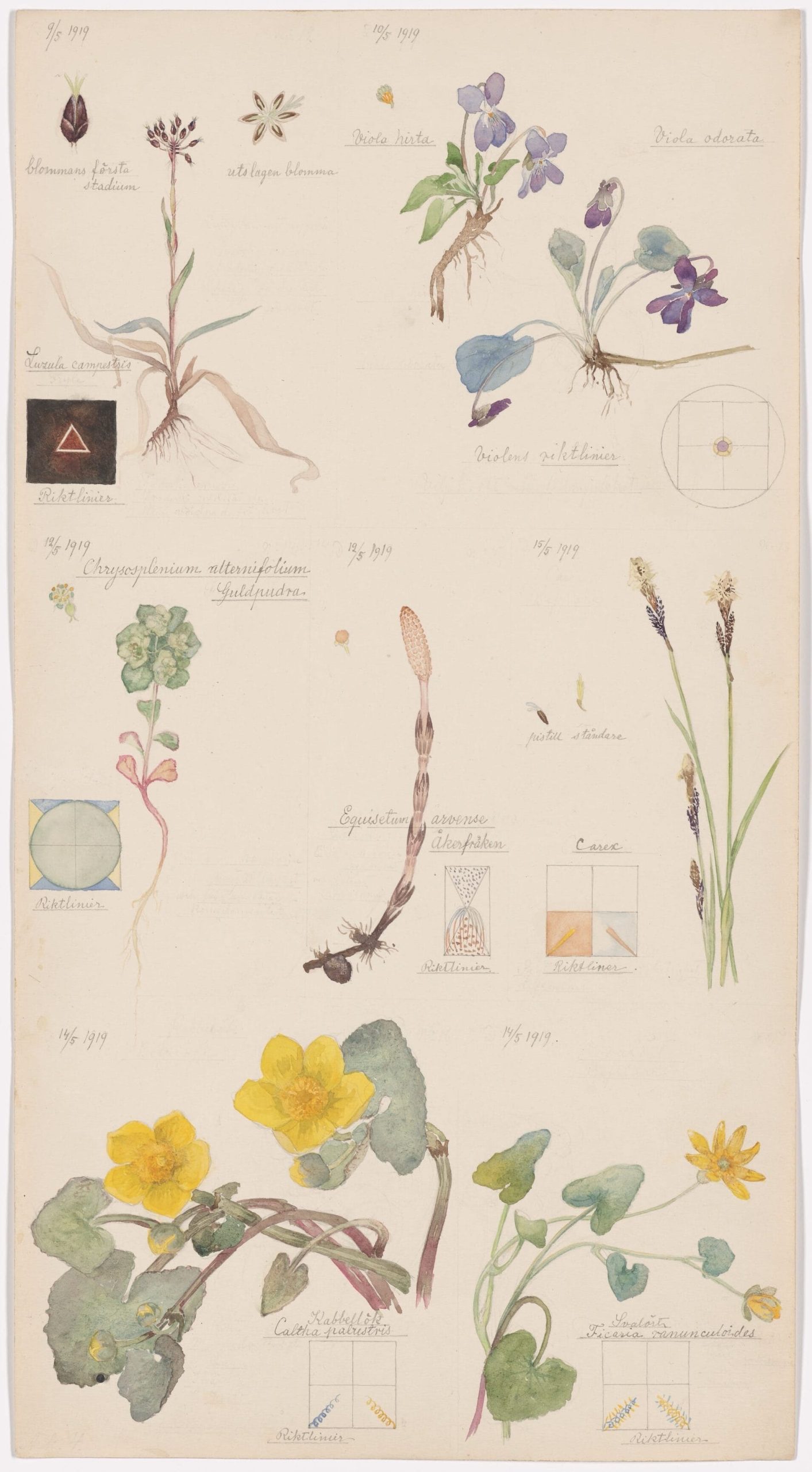
With the Industrial Revolution in full swing at the turn of the 20th century, jobs and opportunities attracted people to burgeoning cities. New technologies were being developed at breakneck speed and discoveries within the natural sciences introduced people to invisible yet potent concepts like radio waves and X-rays.
During this period of social transformation, philosophical or occult religious movements like Spiritualism and Helena Blavatsky’s Theosophy offered ways to not only connect within a like-minded community but to explore the afterlife—the so-called spirit world—and the very fabric of the universe.
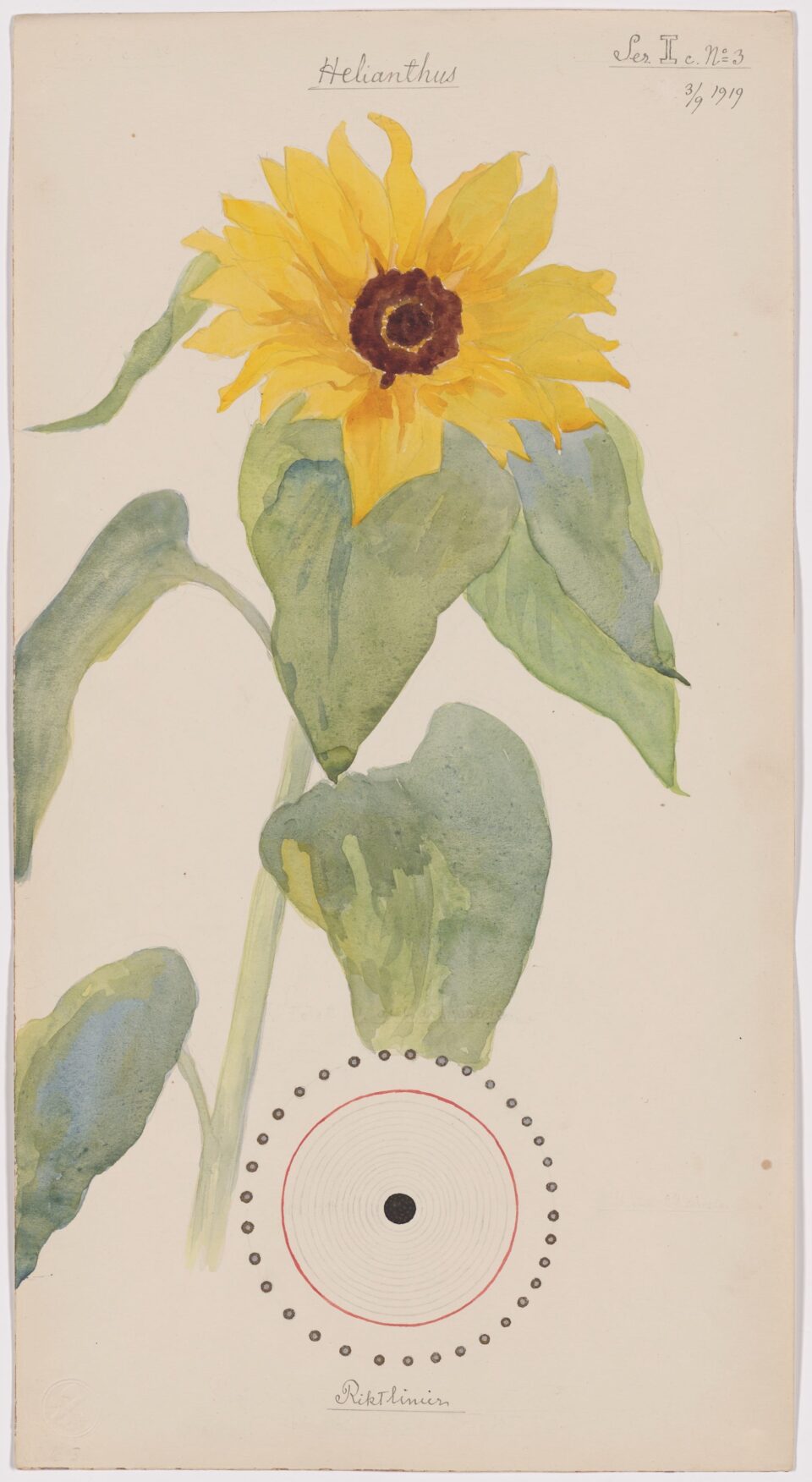
For Hilma af Klint (1862–1944), like many who sought refuge and inspiration in these belief systems, a spiritual link to her surroundings united her with the natural world during “a period of massive change…as people from all levels of society were searching for something new to hold on to,” Johan af Klint and Hedvig Ersman wrote about the Swedish artist’s spiritual journey.
Now on view at The Museum of Modern Art in New York, Hilma af Klint: What Stands Behind the Flowers highlights the institution’s recent acquisition of a phenomenal, 46-leaf portfolio called Nature Studies.
During the spring and summer of 1919 and 1920, af Klint recorded Sweden’s seasonal flora, from lilies of the valley and sunflowers to violets and cherry blossoms. Beyond traditional botanical studies, the artist incorporates her characteristic abstractions and diagrams, surrounding each rendering with esoteric annotations and geometries.
“One has to think of the realm of the nature spirits as the realm of thought; these entities hover around us, some like driving winds, others like soft summer breezes,” af Klint once said.
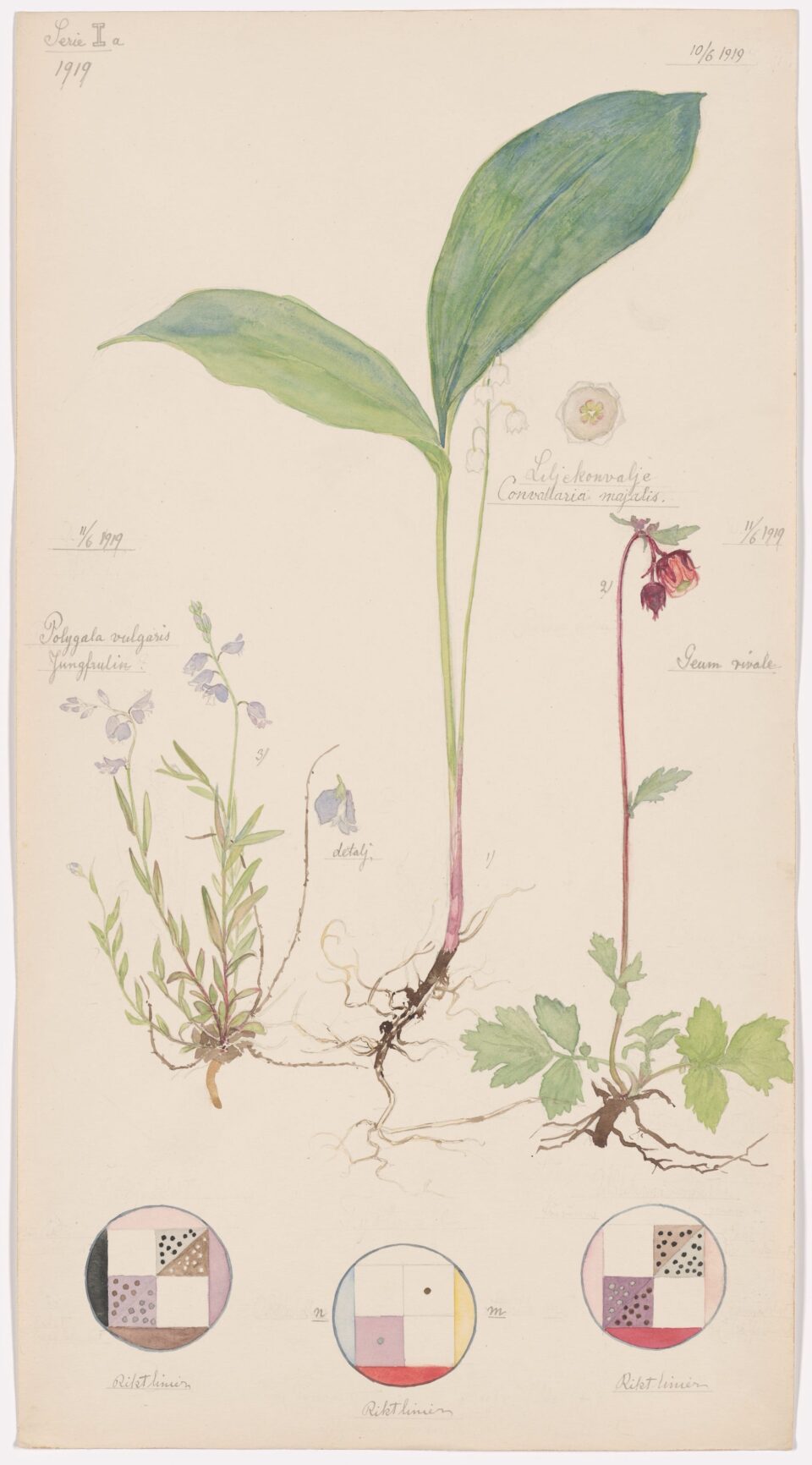
Grids with unique color relationships or energetic spirals accompany renderings of field woodrush or marsh marigold, and tree specimens are paired with dotted checkerboards. “Through these forms, af Klint seeks to reveal, in her words, ‘what stands behind the flowers,’” the museum says, “reflecting her belief that studying nature uncovers truths about the human condition.”
What Stands Behind the Flowers continues through September 27 and is accompanied by a catalogue that is slated for release on Tuesday. Find your copy on Bookshop, and plan your visit to MoMA on the museum’s website.
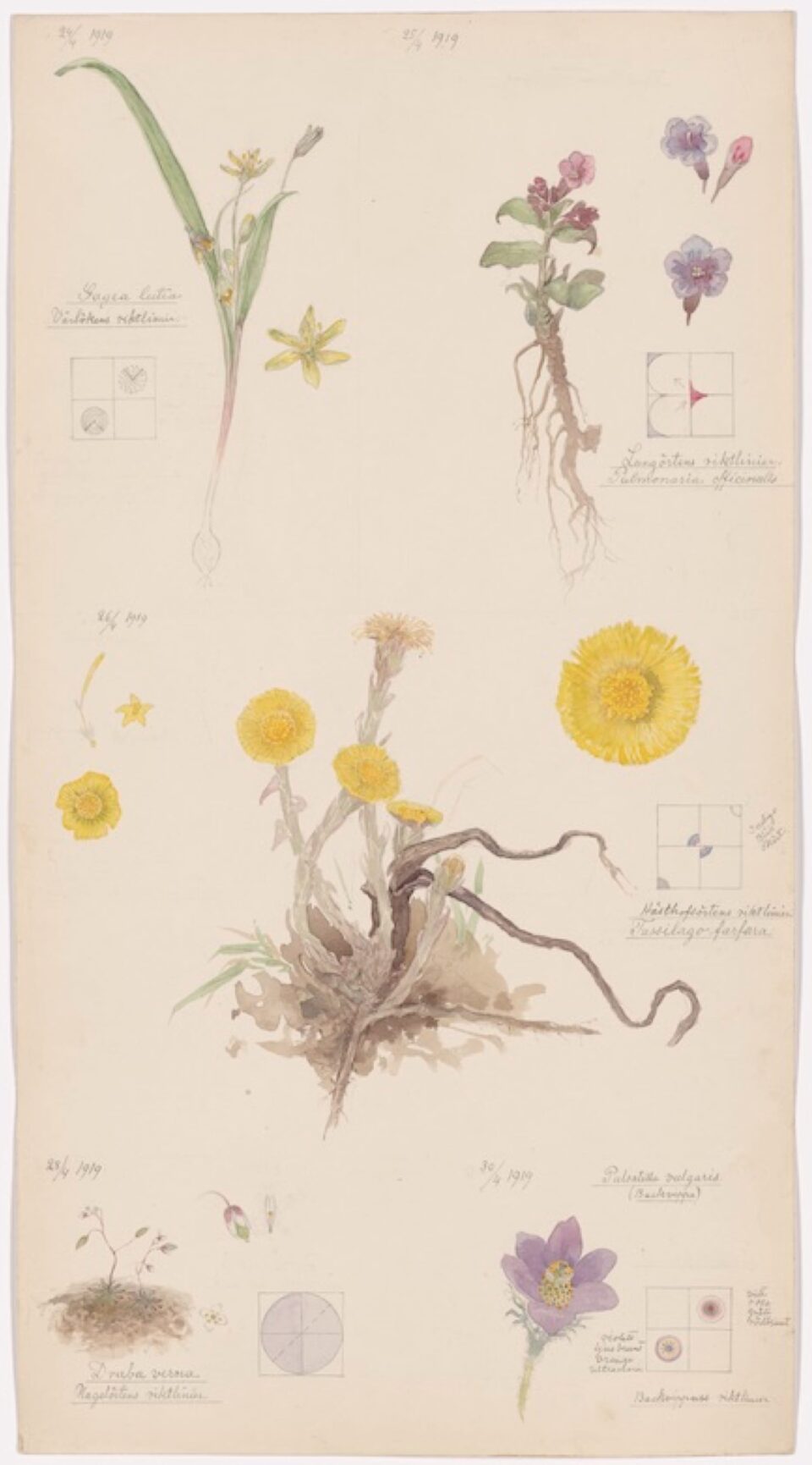

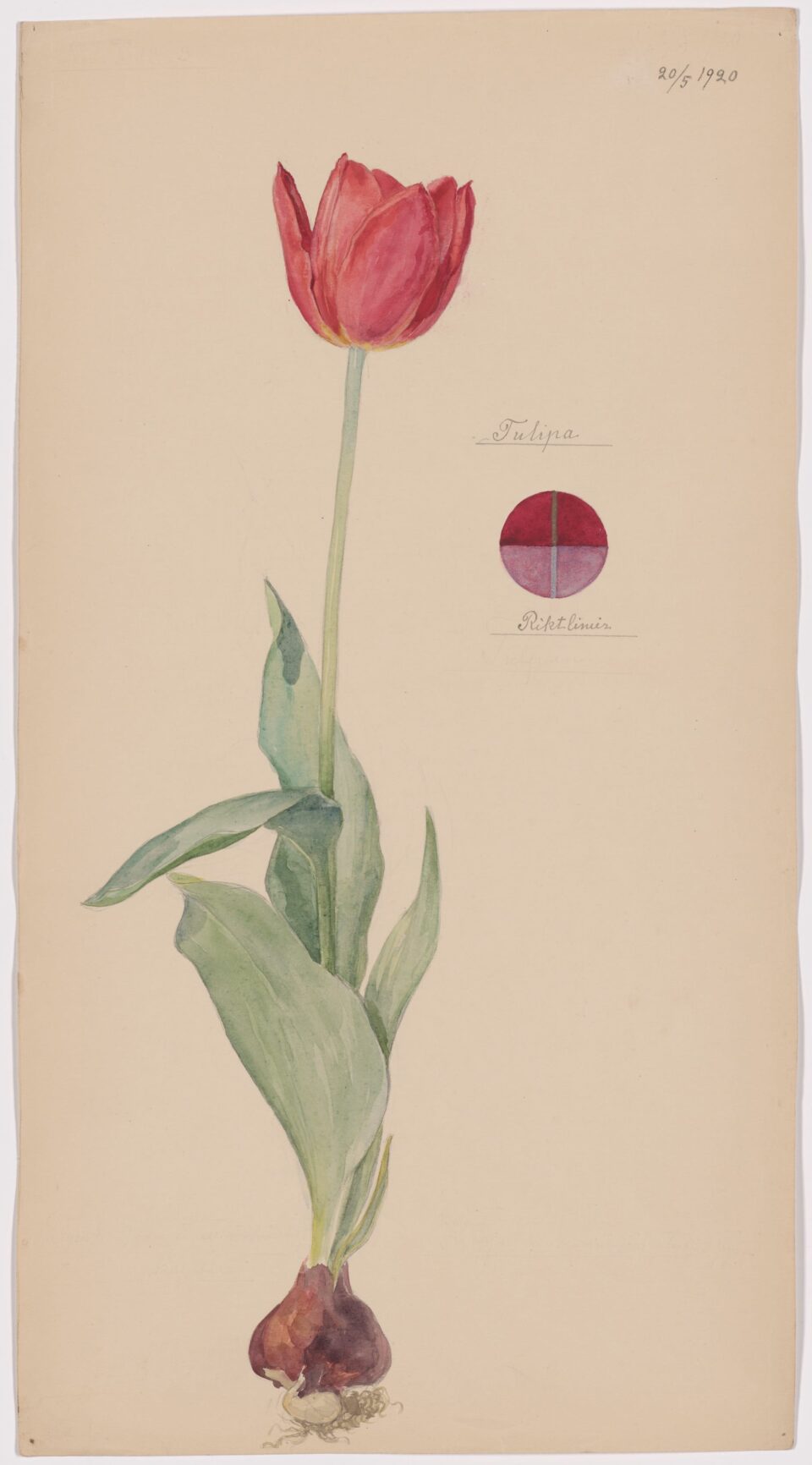
Do stories and artists like this matter to you? Become a Colossal Member today and support independent arts publishing for as little as $7 per month. The article A Unique Portfolio of Hilma af Klint’s Botanical Drawings Communes with Nature’s Spiritual Side appeared first on Colossal.
